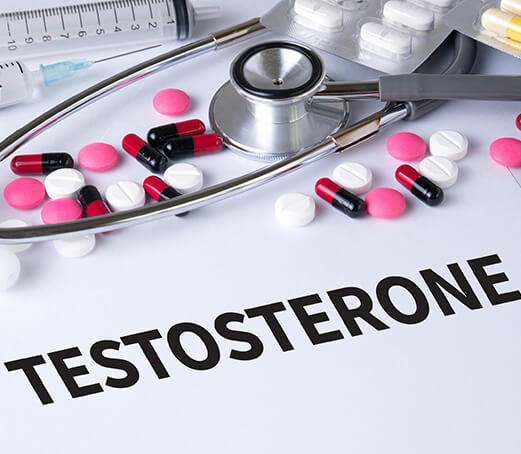What is testosterone?
Testosterone is considered to be the “male hormone” that’s produced in men by the testes. Although women’s ovaries produce some testosterone, the hormone is produced in much higher concentrations in men and it is responsible for many of the secondary sex characteristics seen in men such as a deeper voice and hair on the chest, in addition to contributing to a healthy libido, building muscle mass, and maintaining energy levels.
The problems associated with high testosterone levels are infrequent and rare in middle-aged and elderly men who are not receiving testosterone or other steroid treatments. When the testosterone level becomes out of balance, it usually becomes too low rather than too elevated.
What are the signs and symptoms of low testosterone levels in men?
The most common “out of balance” testosterone levels are found to be on the low side of normal; this occurs because a male’s highest testosterone level usually peaks at about age 20, and then it decreases slowly with age. It has been suggested that a 1% decrease in testosterone level per year is not unusual for middle-aged (30 to 50 years old) and older males. While this decrease may not be noticeable in some men, others may experience significant changes starting in their middle-aged years or more commonly at age 60 and above. This drop in testosterone levels is sometimes termed hypogonadism, “male menopause” or andropause.
Low testosterone levels may result in a decline in:
- Physical energy
- Strength
- Stamina
- Diminished mental aggressiveness
Additional symptoms of low-T in men may include:
- More aches and pains in the bones and joints than normal
- A decline in libido and erections
- Weight gain
- Osteoporosis
CLICK HERE to view or print a helpful educational brochure about Testosterone.


